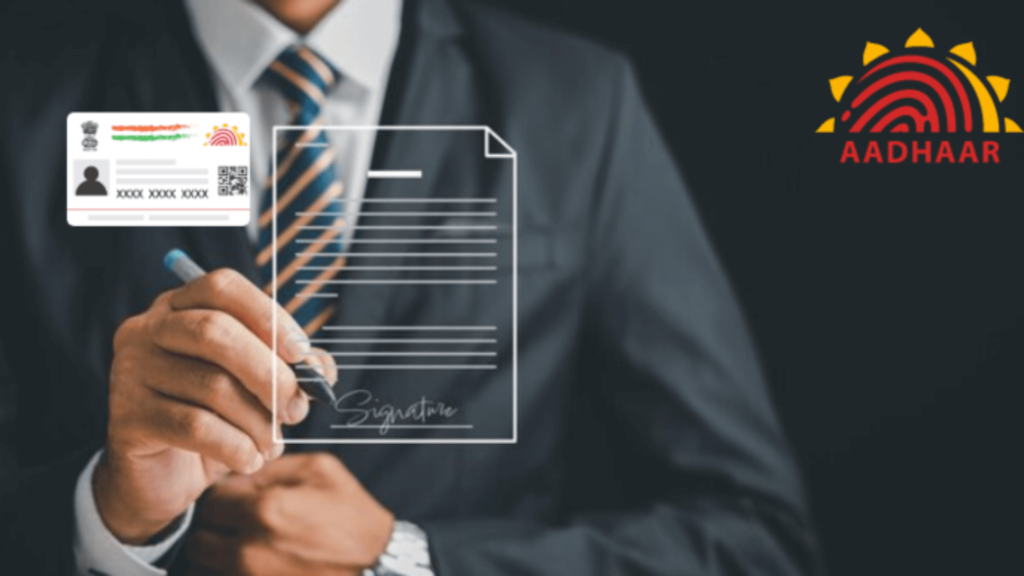Digital signature platforms have become essential for safe, paperless transactions in the age of digital transformation. Concerns over this technology’s use, integration, and legality are growing as more companies and people use it. This blog seeks to walk you through the complexities of digital signatures by offering thorough responses to the most frequently asked questions about digital signatures. Let’s dispel the myths around digital signature tools, from comprehending document requirements to selecting the best option.

FAQ 1: What documents are required to obtain a digital signature?
The individual procedures and laws in force may dictate which documents are needed to receive an electronic signature. Nonetheless, in a broad sense, the following records are usually required:
- Documentation for Identity: When acquiring a digital signature, it is frequently necessary to confirm the identity of the person obtaining it with a government-issued ID, like a PAN card.
- Proof of Address: To verify a person’s residence address, you may need to see documents such as Aadhaar Card
- Business Records (for Establishments): Organizational documents such as a certificate of incorporation, business license, or partnership agreement may be necessary if collecting digital signatures for commercial reasons is necessary.
- Consent papers: To express their desire to utilise digital signatures, people may occasionally be required to submit consent papers or agreements.
- User Agreement and Policies: The supplier of the Digital signature service may require users to acknowledge and accept its terms of service, privacy policies, and any other applicable agreements.
It’s critical to confirm compliance with local legislation and ascertain the documents required for acquiring digital signatures by consulting with the relevant digital signature solution provider or legal authority in your jurisdiction.
FAQ 2: How to validate digital signatures?
Use an application such as Adobe Acrobat to open the document and verify the digital signature. Locate the digital signature object within the document: Right-click or command-click on the signature object. Select “Verify Signature” from the context menu.
Adobe Acrobat automatically checks the information behind the signature and displays a message saying “Signature Valid” if the document remains in its original form.
FAQ 3: How to confirm the legality of electronic and digital signatures?
Verifying adherence to pertinent laws and regulations is necessary to confirm the legitimacy of digital signatures. To achieve this, confirm that the electronic signature complies with existing legal frameworks, such as the IT ACT 2000 in India and the United States’ Electronic Signatures in Global and National Commerce Act (ESIGN). Make sure that advanced signature solutions that adhere to particular regulatory standards are being used. To make sure the digital signatures being used adhere to the relevant legal requirements, always check the local legislation governing electronic signatures and, if needed, obtain legal counsel.
For digital signatures, please ensure the digital signature certificate is valid, and all document signatures are validated by checking properties in the signature panel.
FAQ 4: Can the digital signatures be integrated with other systems?
Yes, digital signatures and a variety of systems can work together seamlessly. Top electronic signature providers provide Application Programming Interfaces (APIs), making it simple to integrate new software with pre-existing platforms such as ERP, CRM systems and document management systems. This guarantees a seamless workflow and enables users to sign papers within programs they already know. Strong integration skills improve productivity and support a unified digital environment. When choosing solutions to streamline processes across several platforms, always look for those with flexible integration possibilities.
FAQ 5: What type of documents can be signed using a digital signature?
Numerous documents, such as contracts, agreements, invoices, legal documents, forms, and certificates, can be digitally signed. Digital signatures are useful for almost any document that needs to be authenticated and have a legally enforceable signature. This adaptability covers various sectors, including the legal, financial, and medical fields. Digital signatures are the industry standard for guaranteeing document integrity and authenticity across various document formats because they provide a safe and effective substitute for traditional signatures.
FAQ 6: How do I choose the right digital signature provider for my business?
When choosing the best digital signature provider for your company, consider security features, adherence to industry standards, scalability, integration possibilities, and user-friendly interfaces. Examine the reputation of the vendor, client testimonials, and the calibre of customer service provided. Make sure they provide solutions appropriate for your sector and adhere to legal regulations. Investigate trial alternatives as well to evaluate usability. Reputable companies, such as Truecopy Credentials, provide all-inclusive solutions with a focus on compliance, e-invoicing, document authentication, digital signatures, and electronic signatures. For best outcomes, assess your company’s needs and match them with the provider’s skills.
Summing up
In summary, this blog has explored the world of electronic signature options and addressed important queries that people and companies frequently have. This investigation aims to arm readers with information, covering everything from comprehending the documentation needed for getting a digital signature to guaranteeing the legitimacy and integration possibilities. Given the continued significance of digital signature solutions, like TRUESigner ONE, in today’s corporate environment, making selections requires a thorough grasp of their nuances. Acknowledge the potential of digital signatures, dispel the confusion, and open the door to safe, effective, and compliant electronic transactions.



